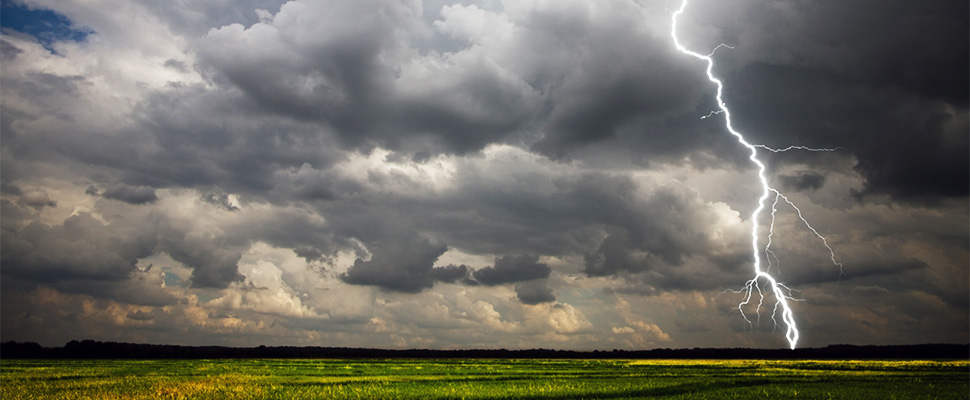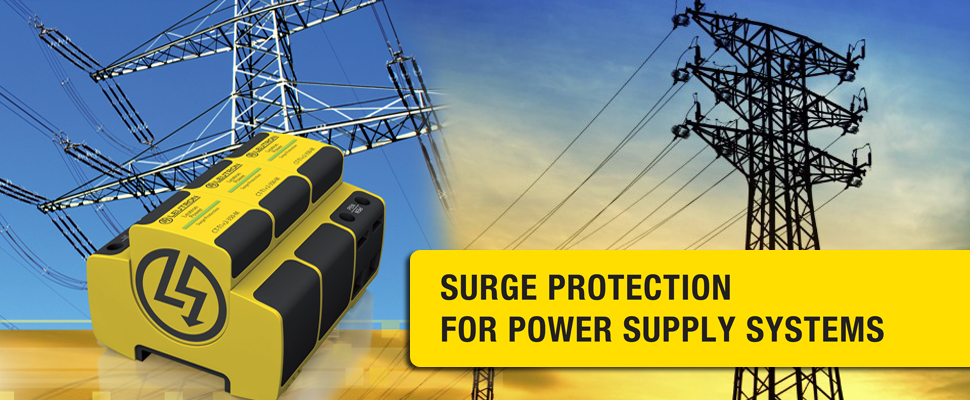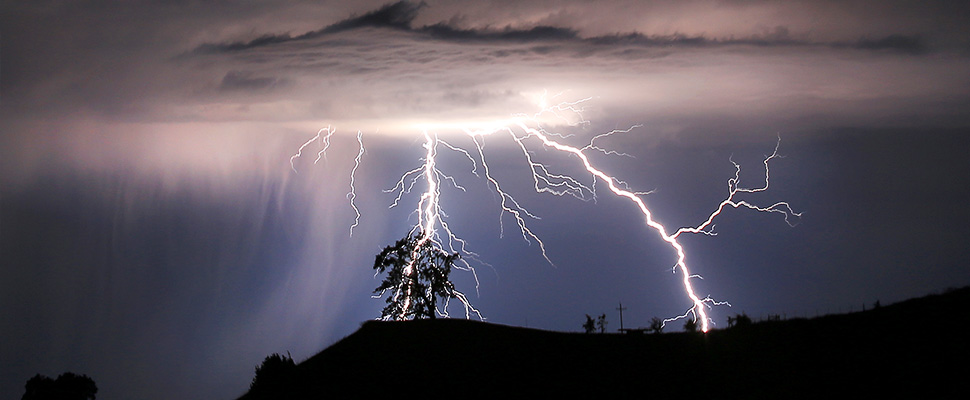
BMJ Offer Lightning Protection - Risk Analysis
(Assessment and Management as per MS IEC 62305 – Part 2)
Introduction
Lightning strikes affecting a structure or a service can cause damage to the structure itself, to its occupants and contents including failure of internal electrical and electronic systems. The damages and failures may also extend to the surroundings of the structure and the local environment. They depend on the characteristics of the object and also on the characteristics of the lightning flashes.
The damages and failures may in-turn produce different types of consequential loss on the object to be protected. To reduce the loss due to lightning, protection measure may be required. The need for protection, the economic benefits of installing protection measures and the selection of adequate protection measures should be determined in terms of risk analysis and management.
Sources and type of damage
The lightning current due to flashes is the source of damage. However, by strike attachment point, it can be distinguished as four major sources – flashes to the structure, flashes near the structure, flashes to a service and flashes near a service.
Flashes to the structure and the service can cause immediate mechanical damage, fire or explosion due to hot lightning plasma arc or by spark triggered due to over-voltages resulting from resistive and inductive coupling, injury to living beings by step and touch voltages, failure or malfunction of internal systems due to LEMP. Flashes near the structure and near the service can cause failure or malfunction of internal systems.
For the application of risk assessment, it is useful to distinguish between three types of damages as the consequence of lightning flashes. They are distinguished as: injury to living beings (due to touch and step voltages), physical damage (due to fire, explosion and mechanical destruction) and failure of internal systems (due to LEMP).
Type of loss
Each type of damage, alone or in combination with others, may produce different consequential loss on the object to be protected. Loss of human life, loss of service to the public, loss of cultural heritage and loss of economic value are the four types of loss associated with the structure. Loss of service to the public and loss of economic value are the types of loss associated with a service. Loss of human life, loss of service to the public, loss of cultural heritage may be treated as social loss and the last one as purely an economic loss.
Risk assessment
The risk may be defined as the value of a probable average annual loss. It depends on three multiplying factors: the annual number (NX) of lightning flashes influencing the structure and the services, the probability (PX) of damage by one of the influencing lightning flashes and the mean amount of consequential loss (LX).
The number of lightning flashes influencing the structure and the services depends on lightning ground flash density (NG) in the region where the structure and the services are located, on the dimension and the characteristics (collection area) of the structure and the services and on the environment characteristics (other weighting factors) of the structure and the services. The probability of lightning damage depends on the structure, the service and the lightning current characteristics (LPL); as well as on the type and efficiency of applied lightning protection measures (LPM). The annual mean amount of the consequential loss depends on the extend of damage and the consequential effects.
To reduce the loss due to lightning, protection measure may be required. Whether they are needed and to what extend should be determined by risk assessment. For each type of loss which may appear in a structure or in a service, the relevant risk shall be evaluated. Risk of loss of human life, risk of loss of service to the public, risk of loss of cultural heritage and risk of loss of economic value are the four risks identified for risk analysis and management.
To evaluate risks (R1 to R4), the relevant risk components (RX) - partial risks depending on the source and type of damage) - shall be defined and calculated. Each risk is the sum of its risk components. When calculating a risk, the risk components may be grouped according to the source of damage and the type of damage.
Risk management
The decision to protect a structure or a service against lightning, as well as the selection of protection measure may be performed by applying the following procedures.
Case study on risk management
Case study on risk assessment & management
Lightning strikes affecting a structure or a service can cause damage to the structure itself, to its occupants and contents including failure of internal electrical and electronic systems. The damages and failures may also extend to the surroundings of the structure and the local environment. They depend on the characteristics of the object and also on the characteristics of the lightning flashes.
The damages and failures may in-turn produce different types of consequential loss on the object to be protected. To reduce the loss due to lightning, protection measure may be required. The need for protection, the economic benefits of installing protection measures and the selection of adequate protection measures should be determined in terms of risk analysis and management.
Sources and type of damage
The lightning current due to flashes is the source of damage. However, by strike attachment point, it can be distinguished as four major sources – flashes to the structure, flashes near the structure, flashes to a service and flashes near a service.
Flashes to the structure and the service can cause immediate mechanical damage, fire or explosion due to hot lightning plasma arc or by spark triggered due to over-voltages resulting from resistive and inductive coupling, injury to living beings by step and touch voltages, failure or malfunction of internal systems due to LEMP. Flashes near the structure and near the service can cause failure or malfunction of internal systems.
For the application of risk assessment, it is useful to distinguish between three types of damages as the consequence of lightning flashes. They are distinguished as: injury to living beings (due to touch and step voltages), physical damage (due to fire, explosion and mechanical destruction) and failure of internal systems (due to LEMP).
Type of loss
Each type of damage, alone or in combination with others, may produce different consequential loss on the object to be protected. Loss of human life, loss of service to the public, loss of cultural heritage and loss of economic value are the four types of loss associated with the structure. Loss of service to the public and loss of economic value are the types of loss associated with a service. Loss of human life, loss of service to the public, loss of cultural heritage may be treated as social loss and the last one as purely an economic loss.
Risk assessment
The risk may be defined as the value of a probable average annual loss. It depends on three multiplying factors: the annual number (NX) of lightning flashes influencing the structure and the services, the probability (PX) of damage by one of the influencing lightning flashes and the mean amount of consequential loss (LX).
The number of lightning flashes influencing the structure and the services depends on lightning ground flash density (NG) in the region where the structure and the services are located, on the dimension and the characteristics (collection area) of the structure and the services and on the environment characteristics (other weighting factors) of the structure and the services. The probability of lightning damage depends on the structure, the service and the lightning current characteristics (LPL); as well as on the type and efficiency of applied lightning protection measures (LPM). The annual mean amount of the consequential loss depends on the extend of damage and the consequential effects.
To reduce the loss due to lightning, protection measure may be required. Whether they are needed and to what extend should be determined by risk assessment. For each type of loss which may appear in a structure or in a service, the relevant risk shall be evaluated. Risk of loss of human life, risk of loss of service to the public, risk of loss of cultural heritage and risk of loss of economic value are the four risks identified for risk analysis and management.
To evaluate risks (R1 to R4), the relevant risk components (RX) - partial risks depending on the source and type of damage) - shall be defined and calculated. Each risk is the sum of its risk components. When calculating a risk, the risk components may be grouped according to the source of damage and the type of damage.
Risk management
The decision to protect a structure or a service against lightning, as well as the selection of protection measure may be performed by applying the following procedures.
Case study on risk management
- Procedure to calculate the need of protection
- Procedure to calculate the cost effectiveness of protection
- Selection of protection measures
Case study on risk assessment & management







